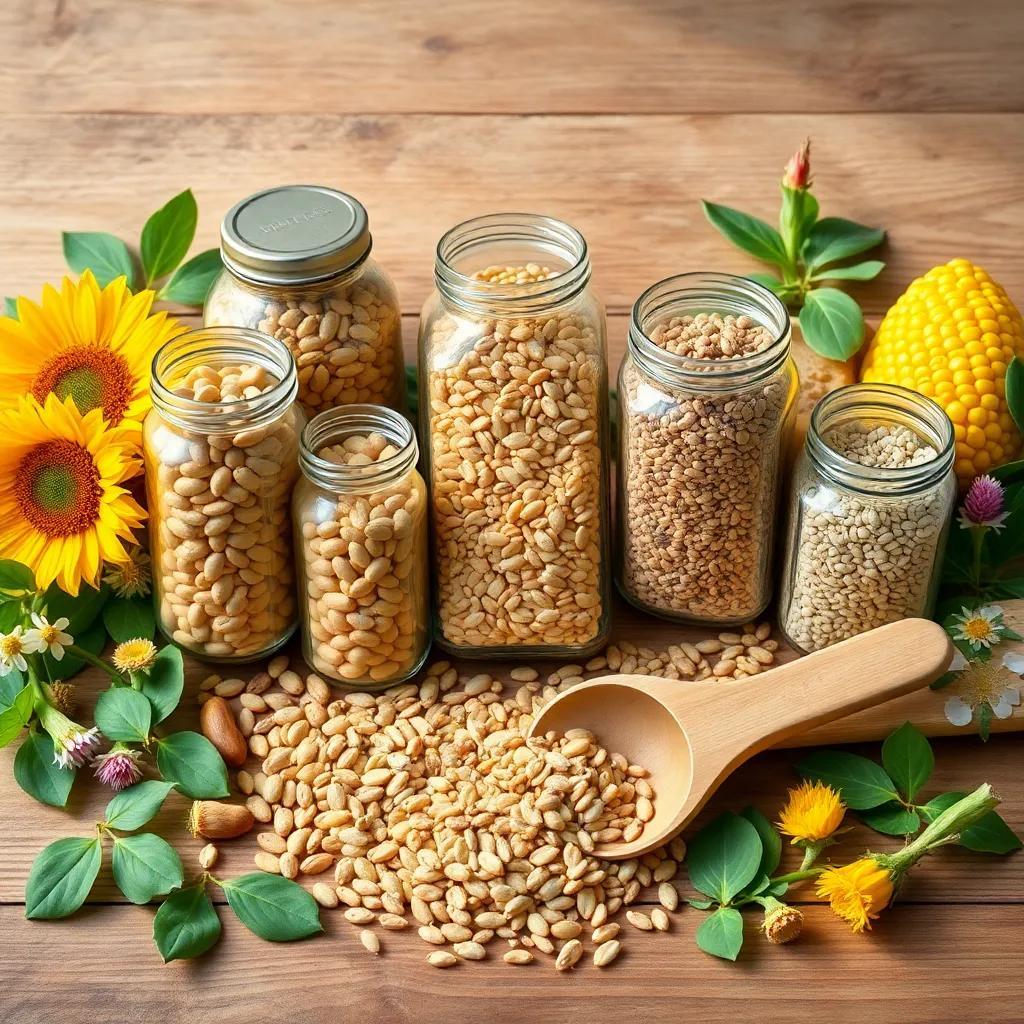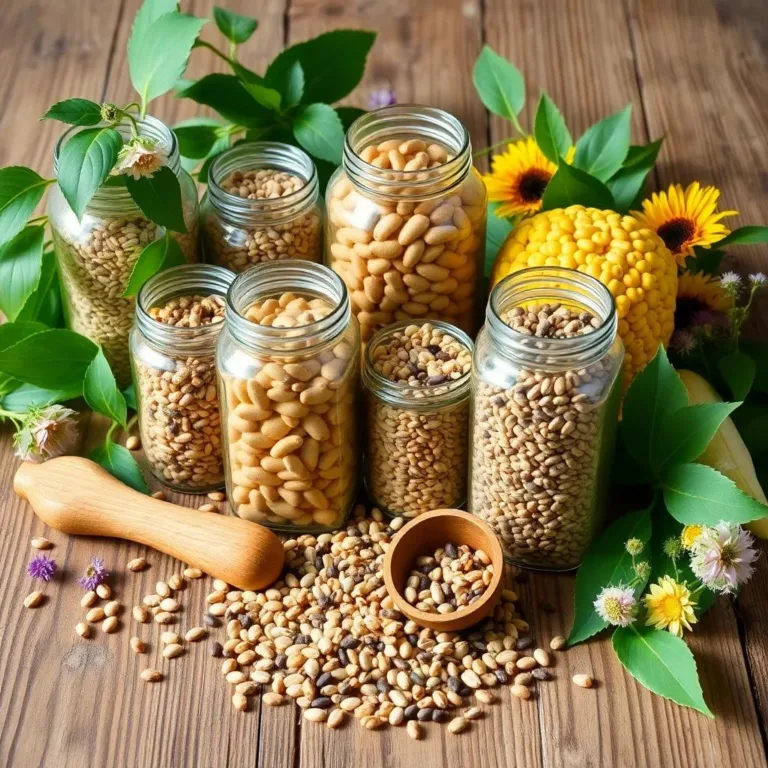Welcome to the delightful world of bird feeding! If you’re anything like me, you love watching our feathered friends flutter around while they munch on tasty seeds. But how do we keep that bird seed fresh and nutritious? Join me as we explore the ins and outs of bird seed lifespan, storage tips, and signs of spoilage—let’s make sure our backyard buddies are always well-fed!
Factors That Affect Bird Seed Lifespan
When it comes to bird seed, a few factors can really impact how long it lasts! Let’s take a closer look at what influences its lifespan. This knowledge can help us keep our avian pals well-fed and healthy!
- Quality of the Seed: It all starts with the quality! High-quality seeds are less likely to spoil quickly compared to those that are lower in quality. When shopping for bird seed, look for seeds that are clean and free of mold or tiny critters. Trust me, the birds will appreciate the effort!
- Seed Type: Did you know that not all seeds are created equal? Some seeds have longer lifespans than others. For instance, sunflower seeds and peanuts typically last longer than millet or nyjer seed. Knowing which seeds to use can save you hassle in the long run!
- Moisture Exposure: Moisture is the enemy! If bird seed gets wet, it can lead to mold. Always store your seeds in a cool, dry place. Remember, a dry bird seed is a happy bird seed!
- Pest Infestation: No one likes unwanted guests, especially pests! Insects like moths and beetles can ruin your bird seed stash. Using airtight containers can help keep these little buggers out!
- Storage Temperature: Temperature matters too! Keeping bird seed in a nice, cool place away from sunlight can help maintain its freshness. A temperature that’s too hot or too cold can spoil the seeds faster than you think.
By considering these factors, I can keep my bird seed fresh and tasty for my feathered friends. The longer the seed lasts, the more joy I get from watching them feed!
Recommended Shelf Life for Common Bird Seeds
So, you want to know how long bird seed can last? The answer can vary based on the type of seed and how we store it! Let’s break down the shelf life of some common bird seeds so we can keep our feathered buddies happy.
- Sunflower Seeds: These are a favorite! When stored properly, unshelled sunflower seeds can last up to six months. Shelled ones have a shelf life of about three months. Doesn’t sound like much, does it?
- Peanuts: Larger birds like blue jays adore peanuts! These can typically last for about six months when stored in airtight containers.
- Nyjer (Thistle) Seed: If you’re hoping to attract finches, this seed is the way to go! Nyjer seeds can stay fresh for around three to six months in a cool, dry spot.
- Millet: A common filler in bird seed blends, millet can last for about six to nine months when cared for properly.
- Safflower Seeds: Attracting cardinals? Go for safflower seeds! They can last up to one year if stored well.
- Corn: If you have ground-feeding birds, corn can provide tasty morsels! It has a shelf life of up to one year.
It’s easy to see that proper storage and care matter! By knowing the shelf life of different seeds, I can plan my purchases and keep my garden bustling with beautiful birds. Happy feeding!

Proper Storage Techniques for Bird Seed
Storing bird seed properly is the key to keeping it fresh and tasty! I’ve learned a few tricks over the years that I’d love to share with you. By following these simple storage techniques, I can make sure my feathered friends are always well-fed!
- Use Airtight Containers: One of the best ways to preserve bird seed is to store it in airtight containers. This keeps moisture, air, and pests out! I love using clear plastic bins or large resealable bags. They not only keep the seeds fresh but also let me see what I have at a glance!
- Choose a Cool, Dry Place: Next, I find a cool, dry location for my bird seed. Avoid places that get hot or humid, like kitchens or garages. A pantry or a dedicated bird seed cabinet works perfectly! A consistent temperature helps prolong the seeds’ shelf life.
- Elevate Storage: Keeping the containers off the ground is another smart tip. I place them on shelves or use pallets. This way, pests have a harder time reaching my precious seeds!
- Regular Checks: It’s wise to check on my stored bird seed every few weeks. I look for any signs of spoilage or pests. A little vigilance goes a long way in keeping my feathered friends safe.
- Rotate Stock: Using a “first in, first out” method helps too. When I purchase new seed, I put it behind the older stock. This way, my birds always get the freshest seeds!
By using these simple storage techniques, I can rest easy knowing that I’m providing the best for my bird buddies. Happy feeding!
Signs of Spoiled Bird Seed to Watch For
Keeping an eye on bird seed is important because spoiled seed can be harmful to our feathered friends! I always look for signs of spoilage to make sure I’m serving the freshest possible options. Let’s explore the signs to watch for!
- Mold or Fungus: One of the most obvious indicators is mold. If I notice fuzzy patches or discolored sections on the seeds, it’s a clear sign they need to be tossed! Mold can produce toxins, which are harmful if the birds consume them.
- Unpleasant Odor: Fresh bird seed generally has a pleasant, nutty smell. If I catch a whiff of something rancid or foul, it’s time to get rid of that seed! Trust your nose; it’s usually right.
- Clumping or Caking: If the seeds look like they’re sticking together, moisture may have gotten to them. Clumping can indicate spoilage, making them unappetizing for birds.
- Insect Infestation: Finding insects in or around the bird seed is a huge red flag! If I see any crawling critters, it’s best to discard that batch. Pests can contaminate the seeds and make them unsafe for birds.
- Unusual Texture or Color: Fresh seeds should look plump and vibrant. If they appear shriveled, dry, or discolored, it’s likely they’ve gone bad and should be disposed of.
By being proactive and checking for these signs of spoilage, I can help safeguard the health of my backyard visitors. It’s all about keeping those beautiful birds happy and healthy!
Tips for Extending Bird Seed Freshness
Want to keep bird seed fresh for longer? I’ve gathered some handy tips to help you out! These little tricks can make a big difference, and they’re surprisingly easy to implement.
- Buy in Smaller Quantities: One of my favorite tips is to purchase bird seed in smaller amounts. This way, I can use it up before it has a chance to spoil. Plus, I get to enjoy the excitement of choosing fresh seeds often!
- Store in a Cool, Dry Place: As I mentioned before, a cool, dry location is essential. Heat and humidity can spoil seeds faster than you can say “tweet”! I always choose spots that stay consistent in temperature.
- Use Airtight Containers: As an added reminder, using airtight containers is a must! Clipping a label with the purchase date on the outside helps me keep track of freshness as well.
- Rotate Stock Regularly: Rotating stock is not just smart; it’s essential! When I buy new seeds, I always put them behind the older ones. This simple step keeps things fresh!
- Keep Feeding Stations Clean: Regularly cleaning my bird feeders is a habit I’ve developed. I remove old seed and wash everything to prevent bacteria growth. Clean feeders not only look better but attract healthier birds!
- Adjust for Seasons: Finally, I adjust my strategy based on the seasons. In warmer months, when birds are more active, I refill feeders more often. In colder months, I store less to avoid waste.
With these tips in my toolkit, I can enjoy the beauty of bird feeding without worry. Remember, happy birds make happy watchers!

